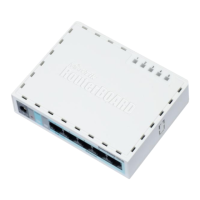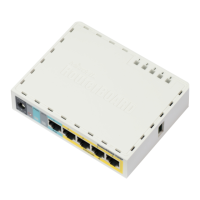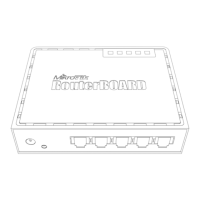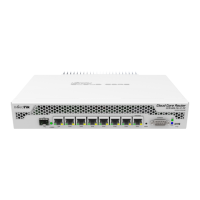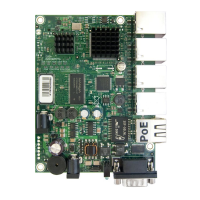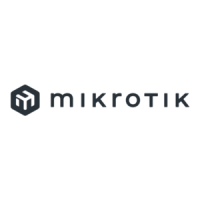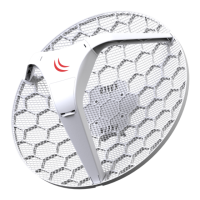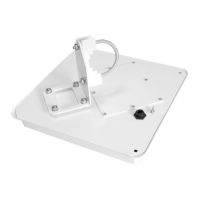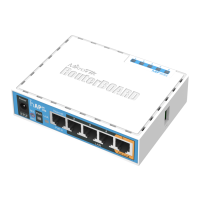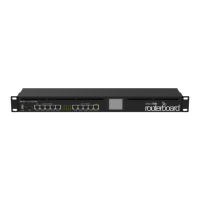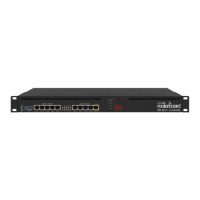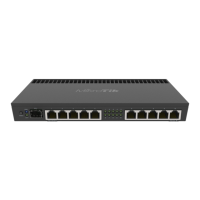4
Hardware Guide
Memory and Storage Devices
Memory
The RB750 has 32MB of built-in memory, RB750GL has 64MB. There are no memory upgrade options.
Input/Output Ports
Ethernet ports
There are five individual Ethernet ports. Ports 2-5 are connected to a switch and can be switched together by
an option in the RouterOS software.
All cables made to EIA/TIA 568A/B cable specifications will work correctly (see Connector Index for pinout).
Note that this port supports automatic cross/straight cable correction (Auto MDI/X), so you can use either
straight or cross-over cable for connecting to other network devices.
LEDs
Etheret LED lights up he a ale is oeted, these LEDs do’t sho etheret atiit, just connectivity.
Power LED indicates that the device receives power. ACT LED shows NAND activity and can be programmed to
show other things via RouterOS LED menu.
User's Guide
Powering
The device accepts powering from the power jack or from the first Ethernet port (Passive PoE):
DC power jack (5.5mm outside and 2mm inside diameter, female, pin positive plug) accepts 8-30V DC
The first Ethernet port accepts passive Power over Ethernet accepts 8-30V DC
Under maximum load, the power consumption of this device is 6W
Booting options
RouterOS is the operating system of all RouterBOARD routers. Please see detailed configuration guide here
http://wiki.mikrotik.com/wiki/Category:Manual
Initial configuration includes the following:
Ports Ether2-Ether5 are connected together as a switch. This switch has a DHCP server runni ng, so you
can connect to the devide using the We ased „Webfig iterface from Ether2-Ether5 or from the
wireless interface. Open http://192.168.88.1 i our roser, i the page that opes, selet „Webfig
ad log i ith userae „adi ad o passord. The Ether1 port has a firewall on it, and a DHCP
liet, so it’s configured to be connected to your ISP.
See this table for specific default config info on all our products:
http://wiki.mikrotik.com/wiki/Manual:Default_Configurations
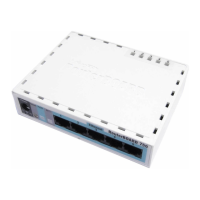
